
How to ‘Fail Better’ on IT Projects
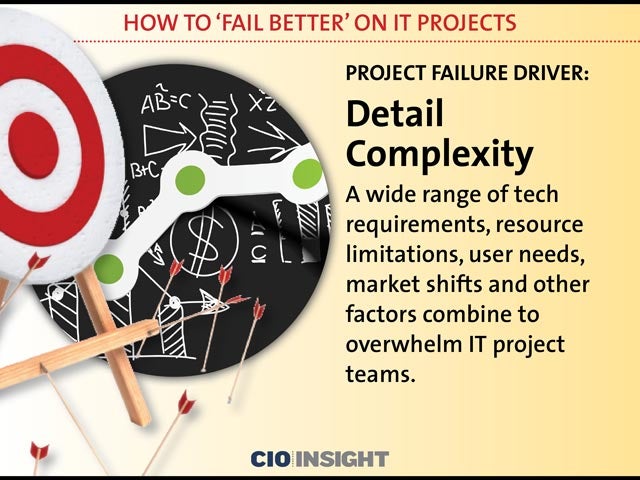 Project Failure Driver: Detail Complexity
Project Failure Driver: Detail Complexity
A wide range of tech requirements, resource limitations, user needs, market shifts and other factors combine to overwhelm IT project teams.
 Project Failure Driver: Dynamic Complexity
Project Failure Driver: Dynamic Complexity
Behaviors shaped by hard-to-predict human and machine relationships will play out in unpredictable ways, making it hard to draw a line from actions to results.
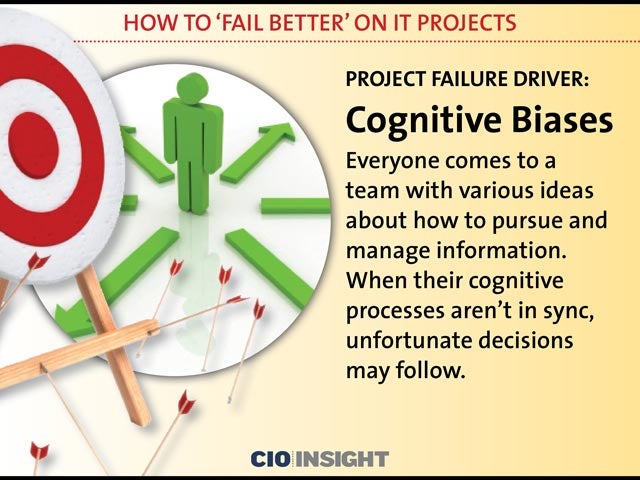 Project Failure Driver: Cognitive Biases
Project Failure Driver: Cognitive Biases
Everyone comes to a team with various ideas about how to pursue and manage information. When their cognitive processes aren’t in sync, unfortunate decisions may follow.
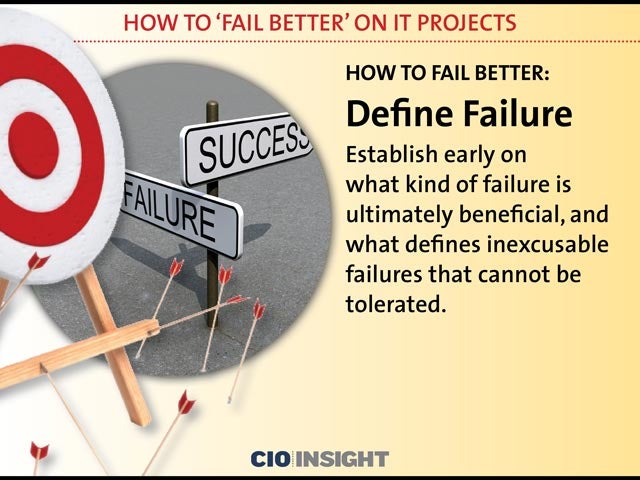 How to Fail Better: Define Failure
How to Fail Better: Define Failure
Establish early on what kind of failure is ultimately beneficial, and what defines inexcusable failures that cannot be tolerated.
 How to Fail Better: Divide and Conquer
How to Fail Better: Divide and Conquer
By breaking a large project into manageable chunks instead of tackling it as a monolithic effort, you can more easily contain any failures.
 How to Fail Better: Get Buy-In
How to Fail Better: Get Buy-In
Get agreement from influencers to incorporate discovery (with no guarantee of success) into various project phases. With this, even notable failures will instruct.
 How to Fail Better: Stop and Think
How to Fail Better: Stop and Think
When you get a sense that something is going wrong, take a step back to identify and correct issues before they gain too much traction to undo.
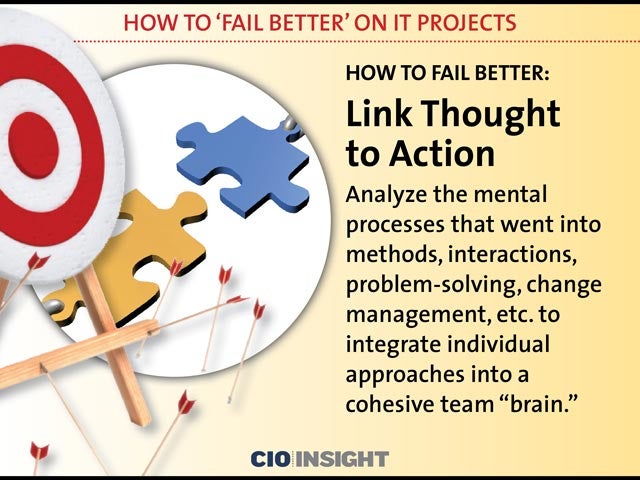 How to Fail Better: Link Thought to Action
How to Fail Better: Link Thought to Action
Analyze the mental processes that went into methods, interactions, problem-solving, change management, etc. to integrate individual approaches into a cohesive team “brain.”
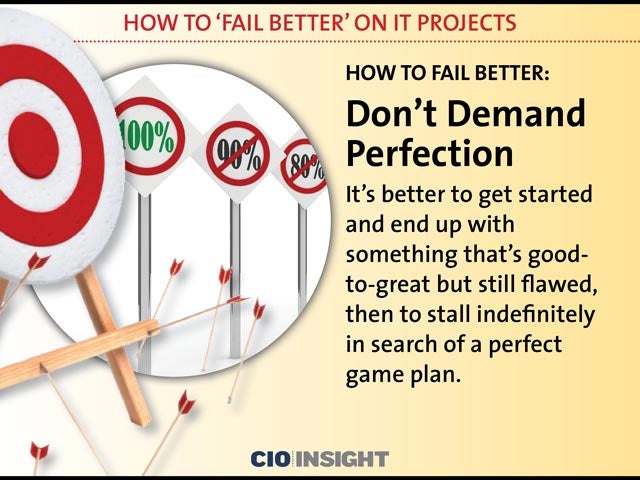 How to Fail Better: Don’t Demand Perfection
How to Fail Better: Don’t Demand Perfection
It’s better to get started and end up with something that’s good-to-great but still flawed, then to stall indefinitely in search of a perfect game plan.
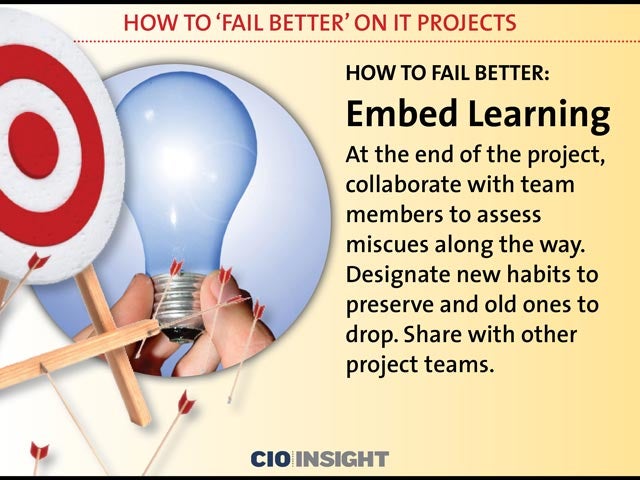 How to Fail Better: Embed Learning
How to Fail Better: Embed Learning
At the end of the project, collaborate with team members to assess miscues along the way. Designate new habits to preserve and old ones to drop. Share with other project teams.